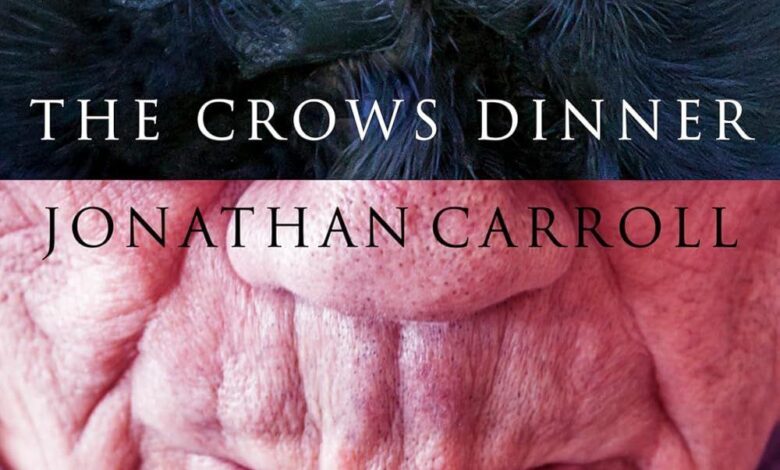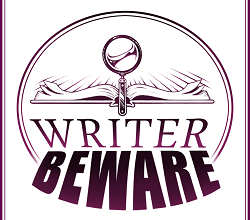Jonathan Carroll’s Impossible Realism | Los Angeles Review of Books

Gary K. Wolfe surveys the career of American fabulist Jonathan Carroll, whose backlist is currently being re-released by JABberwocky eBooks.
JONATHAN CARROLL’S The Crow’s Dinner, a 2017 collection of anecdotes, vignettes, and short essays (now republished in ebook form by JABberwocky Literary Agency, along with five other Carroll titles), offers a delightful and generous sampling of the American author’s thoughts about life, art, and living in his adopted hometown of Vienna, but it might seem a bit sparse when it comes to clues about the enigmas of his unique brand of fiction. There are some notable exceptions, though: one is a short piece titled “Impossible Realism,” a term he tells us “may sound like oxymoron” but “makes a great deal of sense when we permit ourselves to look beyond the quotidian and once again open up fully to wonder, like we used to as children.”
As a literary descriptor, “impossible realism” avoids the considerable baggage attached to “magic realism”—which has often been invoked to describe Carroll—as well as the more genre-oriented boxes of fantasy and horror, which Carroll has justifiably complained about, despite having won both the World Fantasy Award and the Bram Stoker Award (probably the most prestigious award for horror fiction). While his work has earned praise from writers as diverse as Stephen King, Pat Conroy, Stanisław Lem, Neil Gaiman, Jonathan Lethem, Katherine Dunn, and Michael Moorcock, the most common efforts to describe that work resort to rather vague terms like “sui generis” or “unclassifiable.” Carroll himself, in a recent interview with Locus, simply said, “I write mixed salads.”
The first exposure readers had to those salads was The Land of Laughs, Carroll’s inaugural novel, published in 1980. (JABberwocky has plans to release a new print version in 2025.) Initially, the story seems to be a kind of literary mystery, as Thomas Abbey, a prep-school teacher in New England, decides to take a leave of absence to work on a biography of his favorite writer from childhood, Marshall France, the author of a classic children’s book called The Land of Laughs. Joining forces with another enthusiast, a young woman named Saxony Gardner, he travels to France’s adopted hometown of Galen, Missouri, where, much to his surprise (given dire warnings from France’s literary agent), they are greeted warmly by the townspeople and by France’s supposedly reclusive daughter.
With its closely observed descriptions of everything from Abbey’s school to used bookshops to the small-town Midwest, its almost rom-com portrayal of the budding romance between Abbey and Gardner, and even a few inside details of the literary game through the portrayal of France’s agent, the novel invites us to read it purely as a charming example of domestic realism. There even seem to be a few autobiographical elements: Abbey is the son of a famous Hollywood star, possibly modeled on Paul Newman, while Carroll’s father was Sidney Carroll, the screenwriter best known for Newman’s 1961 film The Hustler (another short essay from The Crow’s Dinner describes meeting Newman as a child). But then, well over halfway through the book, we meet our first talking dog. Things quickly begin to spiral in unpredictable directions, at first seeming to point toward a horror-story scenario (strangers visiting a small town that harbors dark secrets) but then shifting again into a far more provocative consideration of the power of the imagination.
In a Carroll novel, the impossible erupts into the quotidian with reliable regularity, but almost never by violating or undermining the terms of realism that Carroll has painstakingly established—no matter how bizarre or surreal the imagery gets. Cullen James, the narrator of Bones of the Moon (1987), spends much of the novel describing her courtship and marriage to a former basketball player named Danny and her life in New York City. It’s mostly an ingratiating love story, despite a few darker notes: the downstairs neighbor turns out to be a serial killer, and Cullen remains haunted by an earlier abortion. Her increasingly complex serial dreams of a fantastical kingdom called Rondua, drawn in part from her own childhood toys, seem to function, as in any tale of domestic realism, as psychological markers—until elements of that magical world begin to intrude on her real life.
Similarly, the opening chapters of Bathing the Lion (2013) might as well be part of an Updike or Cheever story. In a small Vermont town, a couple realizes that their marriage is failing; the husband, who owns a high-end men’s clothing store, is acting out his midlife crisis by buying a high-tech sled, while his wife, a singer at a local club, has been having an affair with her husband’s business partner. Soon, however, we meet a strange young girl who can’t be photographed—the prints turn out to show only vegetables—and who seems to be delivering some sort of warning to the main characters. In another scene, the husband’s clothing store has inexplicably been replaced by a magazine shop that had been there decades earlier. Several of the main characters find themselves sharing a dream in which a giant, bright-red elephant saunters down the road, sporting both an oversize wristwatch and a mysterious design on its side that may be some sort of map (dreams are another Carroll signature, although they’re almost never merely dreams). But each character sees a different map or design, and each ascribes a different meaning to it based on their own experiences.
This is one of a number of scenes in Carroll’s novels that could almost be read as ersatz reader’s guides—clues for how to approach these eruptions of the fantastic, while indirectly giving readers permission to construct their own meanings. Eventually, we learn that some of these thoroughly domestic characters are in fact part of a group of cosmic “mechanics” charged with protecting the universe from the forces of chaos. We also learn of “flips” in reality that permit people to return to any point in their earlier lives, but with all their later memories intact.
This, in turn, leads us to another recurring element in Carroll’s fiction—the notion of alternate versions of ourselves, resulting from all our past choices. As Carroll himself describes it in “The Lonely Tub,” another essay in The Crow’s Dinner, “In my novel The Wooden Sea, the main character meets his younger self and they clash because the teenager is disappointed by what the man has done with ‘their’ life.” Miranda, the central character in The Marriage of Sticks (1999), finds that she has the power to change her fate but learns that all the lifelines she created and abandoned still exist, and are beginning to converge on her. The protagonist of the short story “Alone Alarm” (included in the 2012 collection The Woman Who Married a Cloud: The Collected Short Stories of Jonathan Carroll) is kidnapped by figures who turn out to be versions of himself at different stages of life. Tony, the protagonist of the 2015 novella Teaching the Dog to Read, finds himself confronting and eventually collaborating with a dream version of himself whom he calls Tony Night Shift.
In Carroll’s most recent novel, Mr. Breakfast (2020), the protagonist gets a magical tattoo (from another tutelary figure) that enables him to “visit each of [his] parallel lives three times and return here a fourth and final time, if [he] need[s] it.” But he turns out to be an invisible observer of those alternate lives who will have to choose which of the four he wants to inhabit permanently. In another Crow’s Dinner essay, “Saving Ourselves,” Carroll writes, “How great it would be if we could turn to those other versions of ourself and say ‘You can handle this moment better than me. Please take the wheel now and drive this bumpy part of our road.’” In his recent Locus interview, he invoked both Borges’s “The Garden of Forking Paths” and the 1998 film Sliding Doors as among the inspirations for the novel.
Another of Carroll’s potential clues on reading protocols appears in the 2002 novel White Apples. Yet another enigmatic tutelary figure throws up a handful of ceramic tiles, which seem to magically reorder themselves in midair, forming new patterns on the fly. The tutelary figure explains this as a visualization of how we assemble our own lives, tinkering with the pattern and eventually creating a mosaic that defines us. But the image isn’t a bad description of what it can feel like to read a Carroll novel, which sometimes realigns its plot in midair, not only shifting the tone but also seeming to switch the whole genre. Throughout his career, Carroll has treated genre materials less as structuring principles or formulas than as deep pockets full of colorful tiles he can rearrange at will.
This is why the usual genre reading protocols seldom work with Carroll: in any given novel, we might encounter ghosts, time travel, supernatural agents (sometimes disguised as dogs, another Carroll staple), aliens (also sometimes disguised as dogs; there are always going to be dogs), and even such hard SF concepts as cold fusion. What seems to be a straightforward fantasy may veer into a romance or horror novel, shift briefly into SF, and end with unapologetic discussions of metaphysics and teleology, or such relatively unfashionable concepts as redemption and grace. Sometimes, these resolutions may take on an edge of didacticism or sentimentality, but it’s never an unearned lesson or arbitrary sentiment; Carroll has a particular skill for keeping his characters sympathetic and likable, even when they make bad or even cruel decisions. Almost always, this genre mosaic is framed in vividly evoked settings of domestic realism: sunny small towns in New York, Missouri, Vermont, or rural North Carolina; abandoned highway diners, used bookshops, meager urban apartments. For a writer who has lived for decades in Vienna, Carroll remains fascinated by the byways and colorful characters of the Middle American landscape, and they remain central to his fiction.
In Carroll, the fantastical realm is not a separate, Narnia-like world that we visit through a magic portal but a hidden aspect of daily life—or, perhaps more accurately, what we think of as daily life is merely an aspect of that larger realm, which we can glimpse through dreams and transformations. Even when characters are revealed to be some sort of secret masters of the universe, fighting the forces of Chaos (as in Bathing the Lion), they are nothing at all like Marvel superheroes or “chosen ones” from ancient myths or magic schools; at best, they are working “mechanics” who would just as soon get back to their day jobs. This may be one reason why it can be maddening to try to locate Carroll in any familiar tradition of fantastic writing. While his short fiction has appeared with some regularity in genre venues like Tor.com, it has also been published in eclectic literary journals like Conjunctions. In his essays, novels, and interviews, the writers he mentions are not the usual suspects from the old fantasy canon or the newer fantasy market but a much more eclectic bunch: Kafka, Borges, and García Márquez, of course, but also Saul Bellow, John Cheever, Alice Adams, Graham Greene, and less widely discussed figures like Conrad Aiken, James Salter, and Rupert Thomson. Interestingly, when some of these writers have occasionally turned their hands toward fantastic tales—such as Cheever, Aiken, or Greene—the results are among the relatively few such tales that seem comparable to Carroll’s odd mixture of the quotidian and the miraculous (though I have no idea if Carroll is at all familiar with those particular stories).
My own approach to reading Carroll over the last quarter century or so is to regard his works largely as fables of identity. Nearly all of the trademark characteristics—dreams and dreamworlds, sudden time shifts, the nostalgic landscapes of Middle America, mysterious tutelary figures, encounters with earlier or alternate selves, paintings, photographs, tattoos, and, inevitably, ingratiating dogs with their own secrets—come down to expressions or talismans of character, and this may be a central element that sets Carroll’s fiction apart. “World-building,” a trendy concern among many young fantasy writers and workshop runners, isn’t an issue; the world of his fiction is unmistakably our own—although it may be full of hidden dimensions and temporal trapdoors—and when we do encounter a dreamland like the Rondua of Bones of the Moon, it turns out to be an expression of the anxieties and memories of a particular character.
And those characters, whether the Cullen James of that novel, the disillusioned teacher Thomas Abbey of The Land of Laughs, or the corporate drudge Tony Areal of Teaching the Dog to Read, are—at least initially—firmly grounded in the reality of the social and geographical landscapes Carroll describes in evocative, granular detail. In another, very short essay in The Crow’s Dinner, Carroll references the “paradigm moments” in his own fiction, “the turning point of all the writing I have done since then,” when, in The Land of Laughs, he “reached the part in the story where the dog talks for the first time.” “I simply let go,” he tells us, “accepted the impossible for fact in the story I was writing and kept moving.” Consistently in Carroll’s fiction, once the setting or characters are established, the impossible is treated not as a violation of realism but as an extension of it. What is almost uniquely characteristic of Carroll, though, is that his notion of the impossible doesn’t follow the rules of any familiar protocols of science fiction, fantasy, horror, magic realism, or even romance. Instead, as he reminds us more than once, it’s simply where the story wants to go.
LARB Contributor
Gary K. Wolfe is a science fiction editor, critic, and podcaster. He is a winner of the World Fantasy Award, the Hugo Award, the Pilgrim Award, the Eaton Award, and the BSFA award; has had a monthly review column in Locus since 1991; and is co-host with Jonathan Strahan of The Coode Street Podcast.
Share
LARB Staff Recommendations
-
Evan Selinger talks with Jonathan Carroll about how to choose your best multiverse life in his new novel “Mr. Breakfast.”
-
Did you know LARB is a reader-supported nonprofit?
LARB publishes daily without a paywall as part of our mission to make rigorous, incisive, and engaging writing on every aspect of literature, culture, and the arts freely accessible to the public. Help us continue this work with your tax-deductible donation today!
Source link




